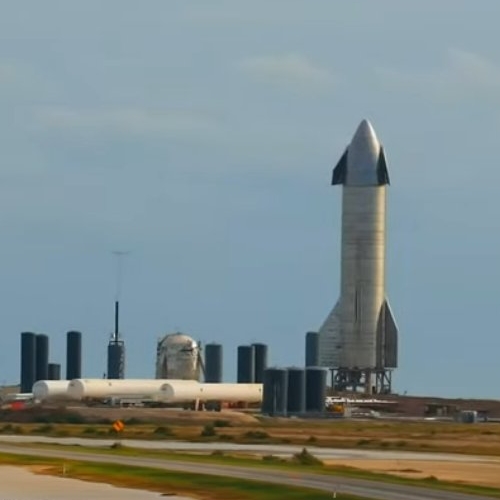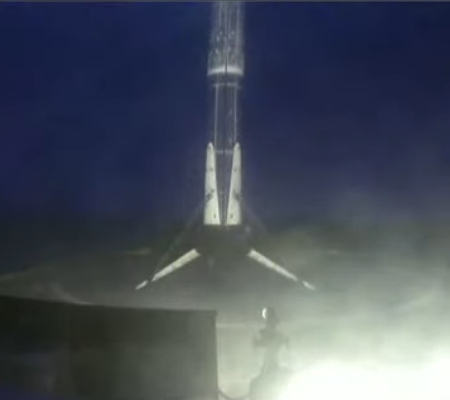Weather delays Starship hop to December 8th; Musk arrives in Boca Chica

Click for LabPadre live stream from which this still was captured.
Capitalism in space: Weather issues have delayed the first big hop of the eighth Starship prototype so that it is now scheduled for no earlier than tomorrow, December 8th.
That Elon Musk arrived in Boca Chica late on December 5th strongly suggests however the hop will finally happen this week, after several weeks of delays.
With Musk himself now on the ground in Texas to (presumably) oversee Starship SN8’s debut, the odds of launch later this week are arguably much better. Having now spent more than 10 weeks at the launch pad, at least twice as long as any Starship preceding it, there’s no small chance that SN8 – the first prototype of its kind – is starting to be more of a nuisance than an asset. By all appearances, Starship SN9 – essentially a “refined” copy of SN8 – is practically ready for launch with SN10 perhaps just a week or two behind it.
It also appears they have lowered the top planned altitude of the hop from 50,000 feet to about 40,000 feet.
Musk had tweeted earlier that SpaceX planned to live stream the event, which would be spectacular as they almost certainly have cameras on the spacecraft. If they don’t the LabPadre live stream above will also be an option.

Click for LabPadre live stream from which this still was captured.
Capitalism in space: Weather issues have delayed the first big hop of the eighth Starship prototype so that it is now scheduled for no earlier than tomorrow, December 8th.
That Elon Musk arrived in Boca Chica late on December 5th strongly suggests however the hop will finally happen this week, after several weeks of delays.
With Musk himself now on the ground in Texas to (presumably) oversee Starship SN8’s debut, the odds of launch later this week are arguably much better. Having now spent more than 10 weeks at the launch pad, at least twice as long as any Starship preceding it, there’s no small chance that SN8 – the first prototype of its kind – is starting to be more of a nuisance than an asset. By all appearances, Starship SN9 – essentially a “refined” copy of SN8 – is practically ready for launch with SN10 perhaps just a week or two behind it.
It also appears they have lowered the top planned altitude of the hop from 50,000 feet to about 40,000 feet.
Musk had tweeted earlier that SpaceX planned to live stream the event, which would be spectacular as they almost certainly have cameras on the spacecraft. If they don’t the LabPadre live stream above will also be an option.


